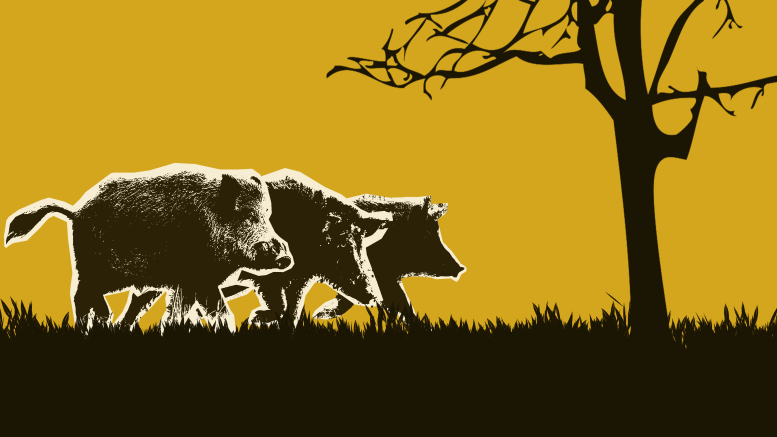Wild pigs, an invasive species commonly known as boar or feral hogs, have spread across Canadian provinces, causing damage to farmers’ crops and livestock.
Wild boars were first brought to Canada from Europe in the late 1980s to diversify Canadian livestock and for wild game. The demand for boar meat declined severely in the early 2000s, and in response, farmers across Canada released their stock into the wild.
According to a national survey of the species, the wild boar population has spread across Canada at a staggering nine per cent each year since its late 1980s to early 1990s introduction. The boar’s prolific breeding is fostered by the species’ early sexual maturity, typically within six to eight months. Sow, female pigs, can have two litters a year each producing an average of four to six piglets.
The species’ ability to reproduce has implications for any possible solution. If 65 per cent of wild pigs were killed each year, their population would still grow, University of Saskatchewan college of agriculture and bioresources professor Ryan Brook said in a 2023 news article for the Associated Press. According to the Economist, the Canadian wild pig population is over 62,000 and growing.
So far, the population spans from British Columbia to Quebec, with the majority residing in Saskatchewan and other prairie provinces.
Farmers are greatly affected by the invasive species. The pigs pose a threat of destruction and disease they carry.
Wild pigs are known as “opportunistic omnivores,” eating everything in their path. Roaming Canada in groups known as sounders, they can destroy acres of a farmer’s land. In what is known amongst farmers as a raid, these pigs dig their snout deep into crops’ soil and trench through — what they do not eat, they destroy.
These raids happen most often at night, as wild pigs are more nocturnal during the summers. During the day, they burrow in mud to avoid the heat exposure.
The average boar in Texas is roughly 130 pounds. Recently, Brook observed a boar in Canada that weighed more than 600 pounds.
Wild pigs have adapted to the cold prairie winter — their thick skin and long legs have brought them success in plowing through snow. Additionally, the species have learned to survive by burrowing under snow for shelter.
Wild pigs carry diseases that threaten the profitability of pork producers. African swine fever is a viral disease carried by wild pigs that can cause high death rates in livestock pigs. The spread of this disease could cost the United States pork industry 15 billion American dollars in two years, according to a study done at Iowa State University.
Texas has faced a wild pig problem for decades, which costs citizens 400 million American dollars in damages annually. The state has employed measures to mitigate the species’ proliferation, namely encouraging hunting and traps, but has failed to significantly reduce their population.
With feral pigs currently occupying more than 750,000 square kilometers across Canadian prairies, Brook noted that Canada is not adequately ready for this impending crisis.


